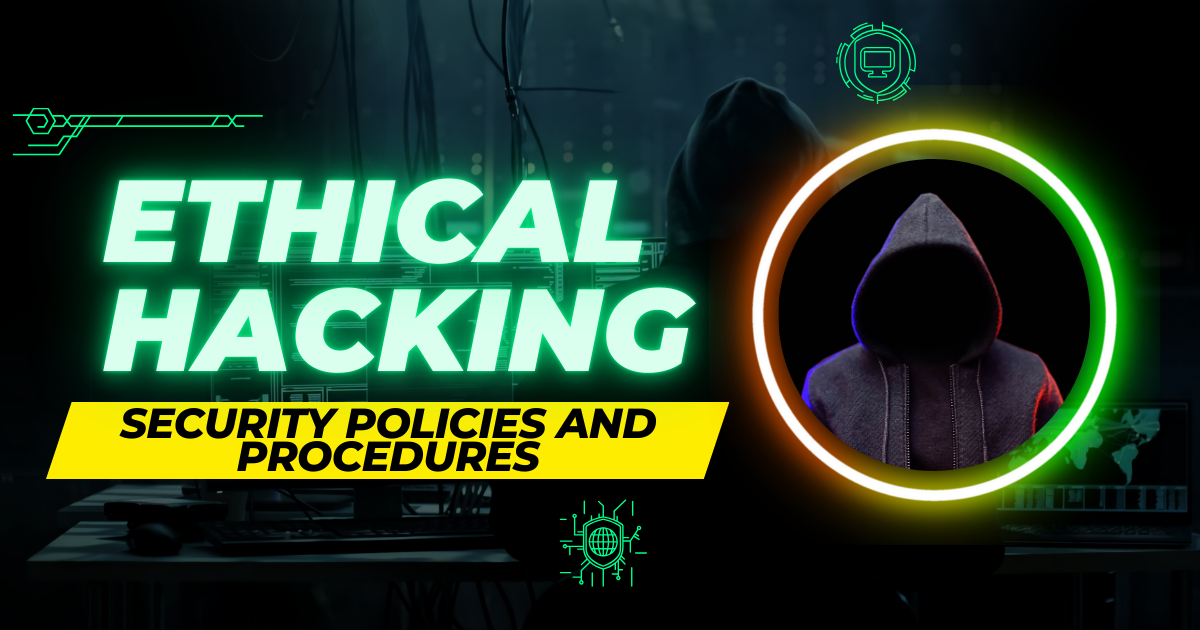Security Policies and Procedures: Importance and Examples
 Devyush Raturi
Devyush Raturi
In the ever-evolving landscape of cybersecurity, technical defenses alone are insufficient. Robust security policies and procedures are the bedrock of a strong security posture, providing a framework for protecting valuable assets. Ethical hackers understand the importance of these documents, often evaluating their effectiveness during security assessments. This article will delve into the significance of security policies and procedures, providing examples to illustrate their practical application.
The Foundation of Security Governance
Security policies are high-level documents that define an organization's security goals, objectives, and responsibilities. They establish the rules and guidelines for protecting information assets. Procedures, on the other hand, are detailed, step-by-step instructions for implementing and enforcing those policies. They provide practical guidance for employees and administrators to follow.
Why are They Important?
Establishing a Security Framework: Policies and procedures create a structured approach to security, ensuring consistency and accountability.
Mitigating Risks: They help identify and address potential security risks, reducing the likelihood of breaches and incidents.
Compliance and Legal Requirements: Many industries are subject to regulations that mandate specific security policies and procedures.
Improving Security Awareness: Policies and procedures educate employees about security best practices, fostering a culture of security awareness.
Incident Response: They provide a roadmap for responding to security incidents, minimizing damage and downtime.
Defining Roles and Responsibilities: They clarify who is responsible for what aspects of security, ensuring accountability.
Examples of Security Policies
Acceptable Use Policy (AUP): Defines how employees and authorized users are allowed to use company resources, including computers, networks, and internet access.
Password Policy: Outlines the requirements for creating and managing strong passwords, including complexity, length, and frequency of changes.
Data Classification Policy: Categorizes data based on its sensitivity and importance, defining appropriate security controls for each category.
Incident Response Policy: Establishes procedures for responding to security incidents, including reporting, containment, and recovery.
Access Control Policy: Defines how access to systems, applications, and data is granted and revoked.
Remote Access Policy: Outlines the security requirements for accessing company resources remotely.
Mobile Device Policy: Addresses the security of mobile devices used for work purposes, including BYOD (Bring Your Own Device) policies.
Examples of Security Procedures
Password Management Procedure: Provides step-by-step instructions for creating, changing, and storing passwords securely.
Vulnerability Management Procedure: Outlines the process for identifying, assessing, and remediating vulnerabilities.
Patch Management Procedure: Defines how software and operating systems are patched to address security vulnerabilities.
Incident Reporting Procedure: Provides instructions for reporting security incidents, including who to contact and what information to provide.
Data Backup and Recovery Procedure: Outlines the process for backing up and restoring data.
User Account Creation and Termination Procedure: Defines the steps for creating and terminating user accounts.
Security Audit Procedure: Provides guidance for conducting security audits and assessments.
The Role of Ethical Hackers
Ethical hackers evaluate the effectiveness of security policies and procedures during penetration testing and security audits. They assess whether these documents are:
Comprehensive: Covering all critical aspects of security.
Up-to-Date: Reflecting the latest threats and technologies.
Enforceable: Clearly defined and practical to implement.
Effectively Communicated: Understood by employees and users.
Ethical hackers may also provide recommendations for improving security policies and procedures based on their findings.
Conclusion
Security policies and procedures are essential for building a strong security foundation. They provide a framework for protecting valuable assets, mitigating risks, and ensuring compliance. By understanding their importance and implementing effective documents, organizations can significantly reduce their vulnerability to cyberattacks. Ethical hackers play a key role in validating these policies and procedures, helping organizations to continuously improve their security posture.
Subscribe to my newsletter
Read articles from Devyush Raturi directly inside your inbox. Subscribe to the newsletter, and don't miss out.
Written by
